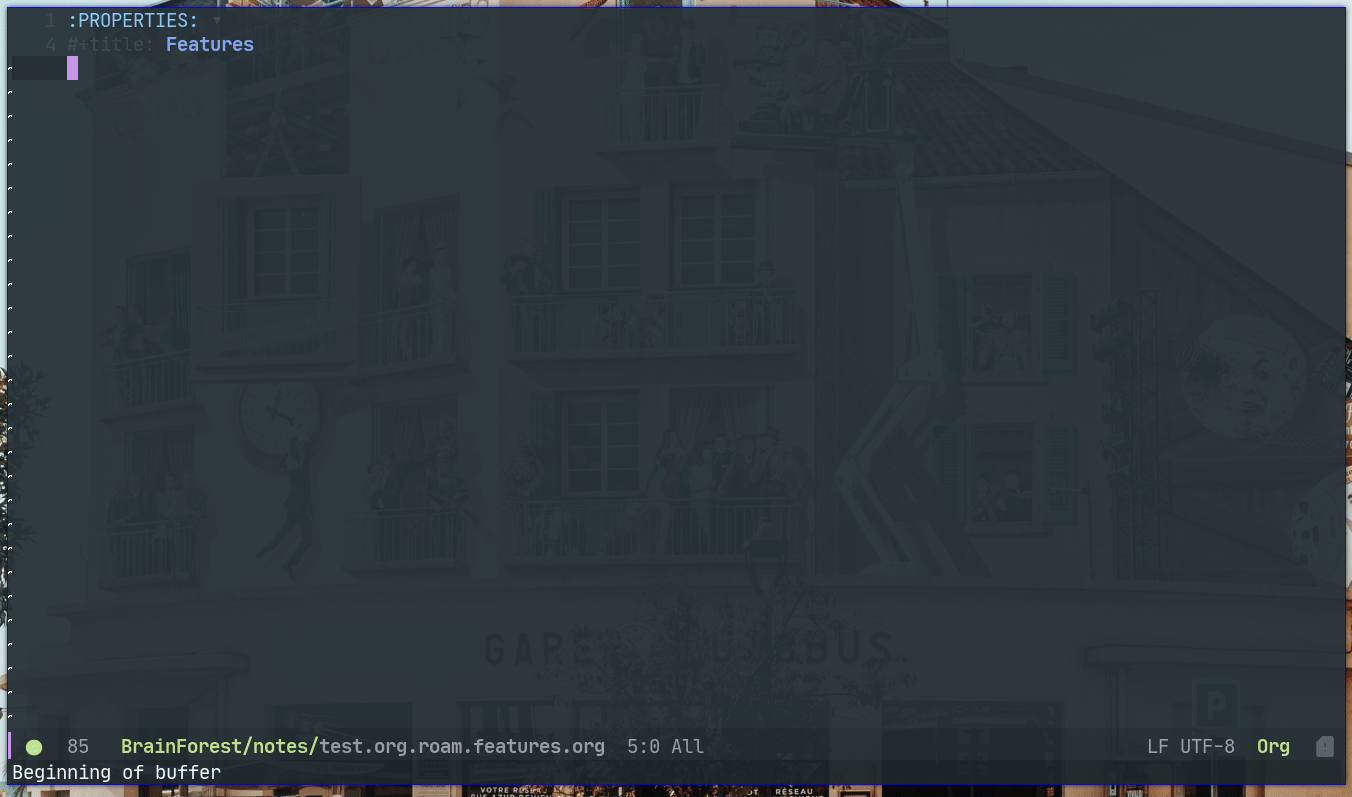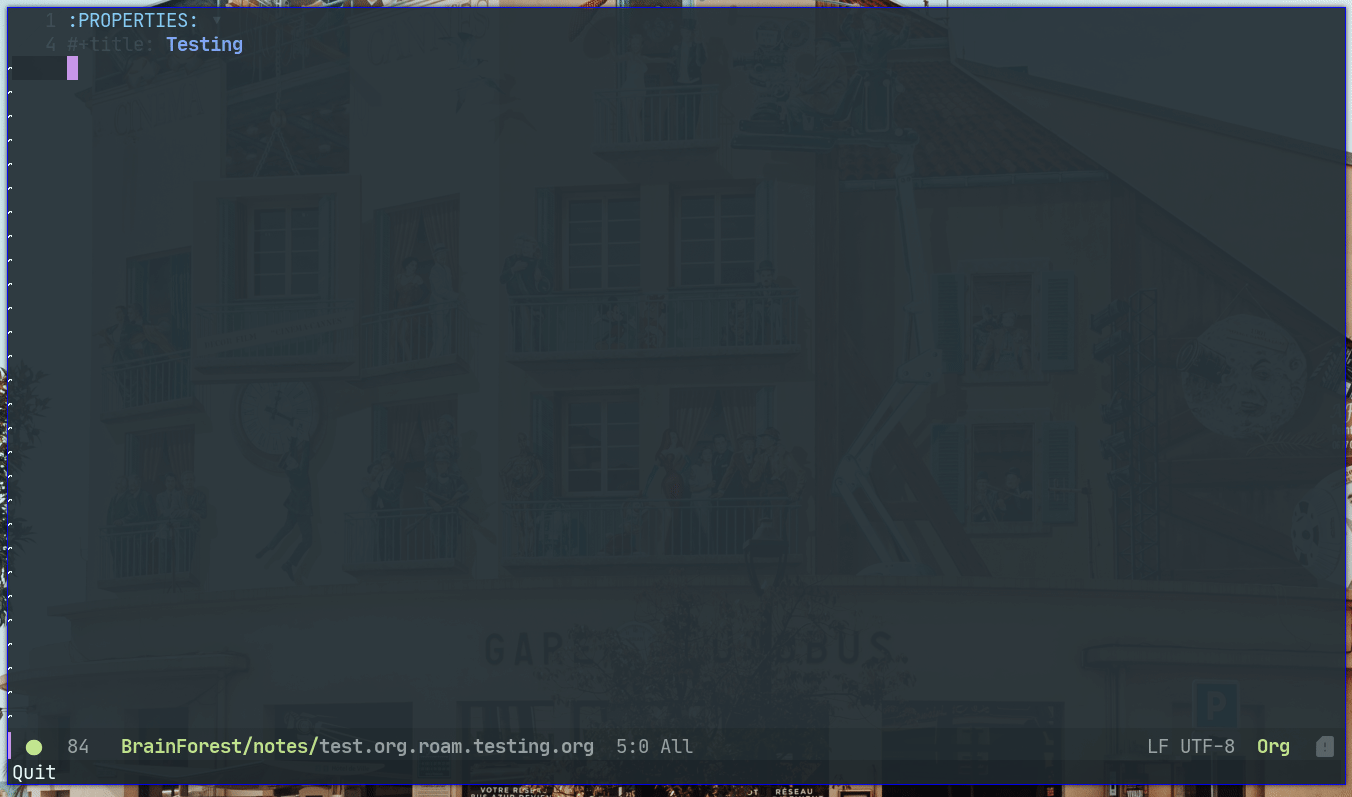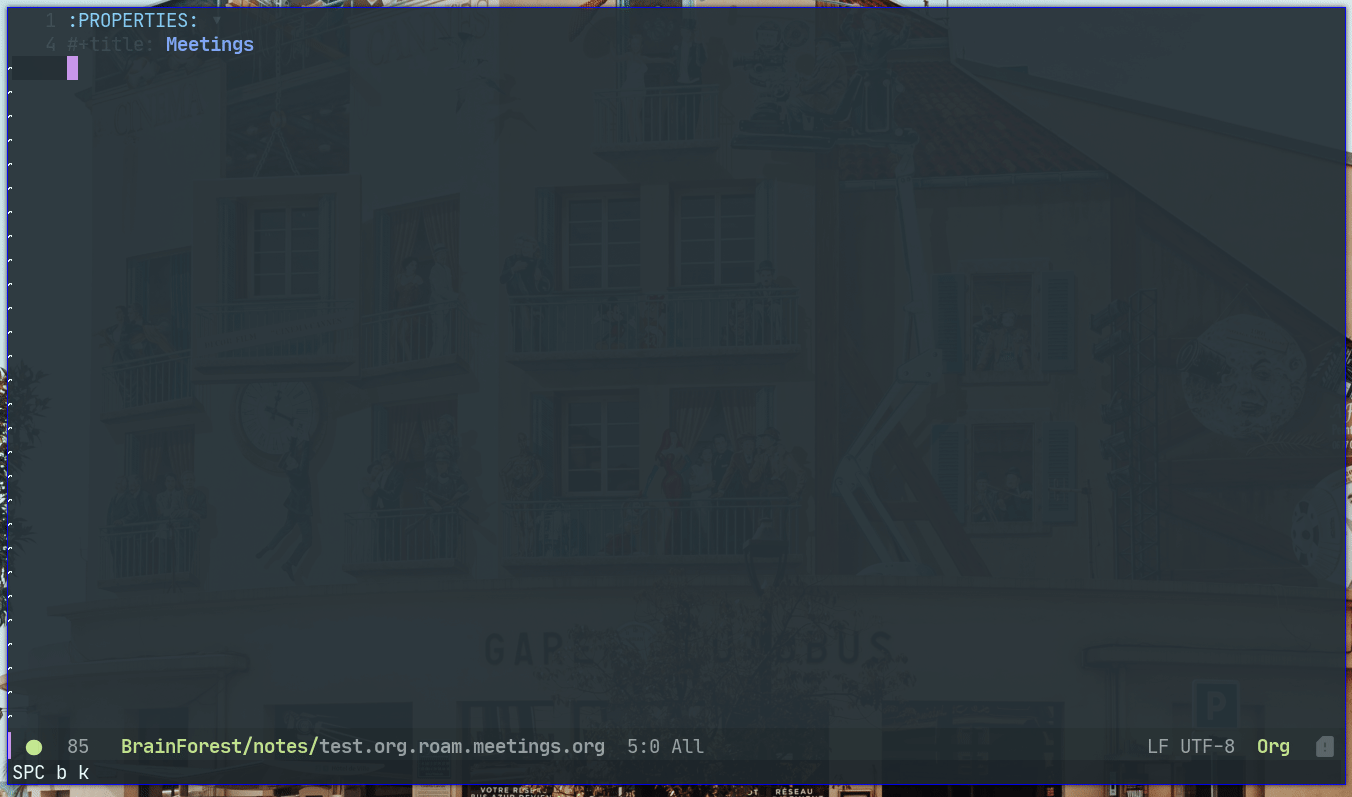Readme
This is an attempt of bringing to bring to emacs some Dendron features hand in hand with Org Roam
Make sure you check the our Discussions page where we can talk about proposals and improvements for the project
Disclaimer
This is a work in progress project in a very early stage. However it is still functional and safe to use in your org roam vault.
This code only works with Org Roam v2 which is currently in public alpha.
As well I’m not an elisp programmer and this is my first code using this language. Probably the code is not as efficient or elegant as it could be, but feel free to point out improvements or even contribute to them.
Why?
In my experience, pure zettelkasten is awesome for academic information, taking notes on books, and articles that are full of abstract concepts that don’t belong to any category but are inter-linked with other ideas.
However since I work in the IT industry, I take a lot of notes on software and software architecture. This kind of information has a clear structure, a structure that repeats between information that belongs to an specific context. And here zettelkasten in my opinion is not the perfect fit.
I ended up having lots of notes like: data types in Java, data types in c… Repeating information in the title to be able to find specific notes.
This kind of note taking is really useful for me, and I think it can be useful for others which write about more structured information
This hierarchies helps grouping and branching notes that are strongly connected but leaves the concept of atomic note intact, a note that you can still link with others that are related. Also, makes finding this references faster among all your notes.
In addition, having this little feature set does not get in your way if you want to use just zettelkasten.
For this I got hooked on Dendron’s concept of note taking but couldn’t get used to VSCode, so I decided to write some code to have some of its beautiful goodies along with the awesome Org Roam features.
You can find more on the hierarchies rationale in the blog of Dendron’s creator
Features
Hierarchies are just filenames separated by dots “.”, each subsequent hierarchy is child from the former. Something like:
org.refile -> refile is child of org
org.refile.cfg -> cfg is child of refile
Each child is a note, so we can have a folder-like structure, but much less rigid.
Finding and creating notes
This emulates the Dendron’s Lookup. Runing org-roam-node-find shows hierarchies
in the minibuffer. If the note does not exist, the input is used to populate a
new file.
The search list will show notes with the following format:
this.is.a.hierarchy:Hello World
Dendroam will truncate the last child of the hierarchy for the file (which is indeed the slugified title) and will show the file title instead for better readability.
For note creation you don’t need to use hypens, dendroam will change spaces for hypens for the file name, keeping the title correct:
Writing:
proj.dendroam.notes on dendroam
as input will result in:
file: proj.dendroam.notes-on-dendroam.org
Note title: Notes On Dendroam
Of course you can create notes without any hierarchy as you would normally do with Org Roam
Refactor hierarchies
Useful to move group of files to another hierarchy.
- Running
dendroam-refactor-hierarchywill prompt you with the current file hierarchy so you can change it. This will refactor all the notes that share the same hierarchy as well - Running
dendroam-refactor-filewill do the same as refactor hierarchy command but will change only the current file.
Time notes
Time notes are sub-hierarchies of other notes that indicates the time, you might want this notes under different other notes, journal notes are a great example. In this case dendroam is integrated with org-roam-dailies, so we can still using the current functions:
journal.daily.2021.04.21
Or hierarchy where you capture meetings:
project.customer1.meet.2021.04.21.123020
project.customer2.meet.2021.04.21.183020
This makes notes easy to sort and easy to find. You can create time notes under any other note as well
Scratch notes are other way of looking at time notes. This type of notes are just a dump bucket where you want to capture something on the fly. It is nothing more than a top-level hierarchy with time:
scratch.2021.04.21.183020
Take a look at the example:
This notes are possible using org-capture through org-roam new capture functions, so it is easy to creae new types of time notes.
Configuration
To show hierarchies in the minibuffer you must change the org-roam display template:
(setq org-roam-node-display-template "${hierarchy}:${title}")In order to populate the title correctly you need to configure org roam capture templates like this:
(setq org-roam-capture-templates
'(("d" "default" plain
"%?"
:if-new (file+head "${slug}.org"
"#+title: ${hierarchy-title}\n")
:immediate-finish t
:unnarrowed t)))An example dailies configuration that works with hierarchies:
(setq org-roam-dailies-capture-templates
'(("d" "default" entry
"* %?"
:if-new (file+head "journal.daily.%<%Y.%m.%d>.org"
"#+title: %<%Y-%m-%d>\n"))))To allow scratch notes and time notes you need to configure a new variable
defined in the dendroam code called dendroam-capture-template, that adds
more templates:
(setq dendroam-capture-templates
'(("t" "Time note" entry
"* %?"
:if-new (file+head "${current-file}.%<%Y.%m.%d>.org"
"#+title: %^{title}\n"))
("s" "Scratch note" entry
"* %?"
:if-new (file+head "scratch.%<%Y.%m.%d.%.%M%S%3N>.org"
"#+title: %^{title}\n"))))If you want to show the current file hierarchy as an initial input when running the find command, you can use this function and then bind it to a key combination of your choice
(defun dendroam-node-find-initial-input ()
(interactive)
(org-roam-node-find nil (if (buffer-file-name)
(file-name-base (buffer-file-name))
"")))Install
Doom Emacs
Load from Disk
You can clone the repo and load the file into your config:
(load! "<path to dendrom.el file>")Note that the code above is for doom emacs, I guess you can have the same effect
with load in vanilla emacs as well. All the help you can give me on how to
distribute the package is really apreciated.
Load via github recipe
Inside of your .doom.d/packages.el:
(package! dendroam
:recipe (:host github :repo "vicrdguez/dendroam" :branch "main"))This registers dendroam as a package to use in doom. Now inside of .doom.d/config.el:
(use-package! dendroam
:after org-roam)Future plans
This code is something I use my self so I plan to keep improving it. This are the things I have in my mind now.
More Dendron features:
- Schema support: I’m researching how to best approach this. Using YAML files like dendron does? Not sure about elisp support for YAML. Another option is to use elisp forms to define schemas and then load them. This is open to discussion of course and I would love to know ideas on this if you have any. Feel free to show them.
- Publishing: Having an easy and integrated way of publishing would be nice. I don’t know too much about web technologies so again, help is really apreciated.
We can of course discuss about more dendron features can be useful in org roam/emacs context.
Dendroam specific plans
- Try to keep compatibility with org roam, and if possible add compatibility with Dendron so people can use both (of course exporting org to markdown and viceversa)
- Some improvements to take advantage of the powerful emacs features.


